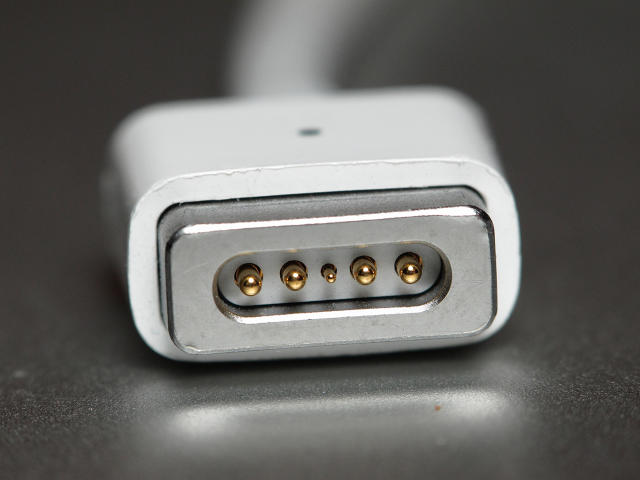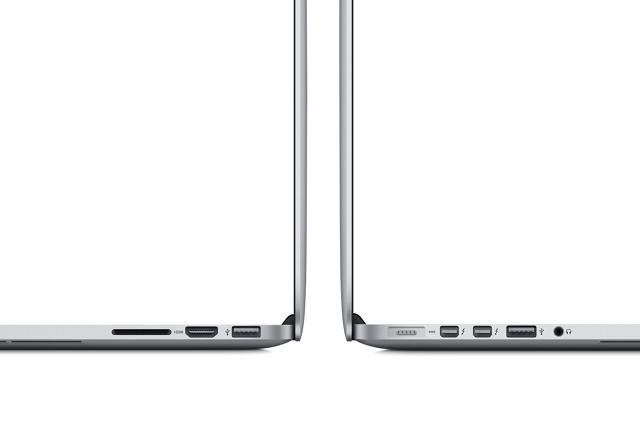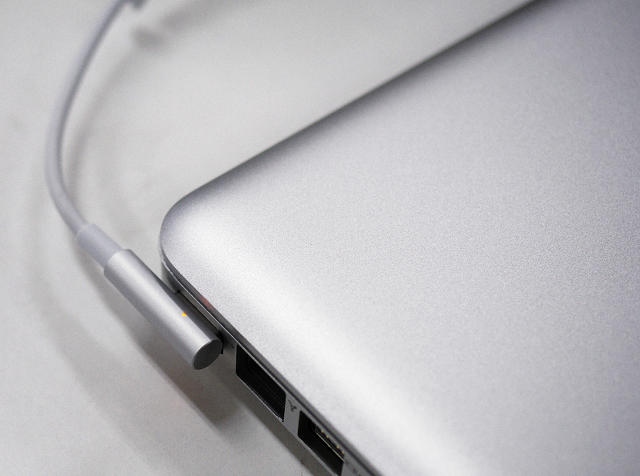MagSafe, one of Apple's most innovative, brilliant, ruthless, valuable, and, at times, troubling designs has finally died, replaced with something less beautiful and clever to charge the revamped MacBook: a new connector called USB-C.
Since 2006, MagSafe has been one of the many seemingly small innovations that has the path of migration from the PC to Mac so one-sided. Great design fixes real problems, and the MagSafe certainly fixed a doozy. You buy a $2,000 laptop, and plug it into the wall. Later, you trip on the cord, causing your expensive new laptop to meet its demise on the floor. MagSafe solved all that. With a satisfying clack, magnets would guide and hold the MagSafe connector firmly in place while an Apple laptop charged, but not so firmly that if someone tripped over the cord, it took the laptop along with it.
Once you used MagSafe, you couldn't imagine physically plugging something into your laptop. Who would go back once you've experienced MagSafe? It seemed unfathomably gross and behind-the-times, like that scene in Demolition Man where Sandra Bullock recoils at the idea of having greasy, sweaty sex, when you could just slap on a VR headset and beam clean waves of pleasure directly into the nerve clusters of someone's brain.

Naturally, Apple patented the hell out of MagSafe, preventing other companies from releasing their own alternatives to MagSafe without getting sued. It was a hell of a patent. If your magnetic cable could be pulled out of a gadget in any direction besides straight out without damaging what it was connected to, it violated Apple's patent. Even Microsoft's Surface, was forced to utilize a less-sticky and generally inferior magnetic connector. It even went as far as to prevent headphone makers from utilizing a magnet-based connection.

That's not to say that MagSafe was perfect. Early versions of the MagSafe employed a T-shaped design, which brought fraying, overheating, and a class-action lawsuit in 2009. Its replacement, while less prone to hazard, managed to cover up other ports. But by 2012, Apple unveiled a design which finally got it right.

With yesterday's announcement of the next-gen MacBook, Apple's laptops have gotten about as thin as they can possibly get, which means there's literally no room for the MagSafe connector. But there is a silver lining to be had: the new USB-C connector is an open standard, which means: any company out there can build and use USB-C for charging, not just Apple.
MagSafe loyalists may find comfort in rumors that MagSafe will live on as a magnetic connector that lives closer to the wall socket, but it appears to be the end of an era. Soon, other Apple laptops will presumably switch over from MagSafe to USB-C. Maybe, though, if Apple's no longer using MagSafe, they'll finally allow other companies to start innovating with magnets again.